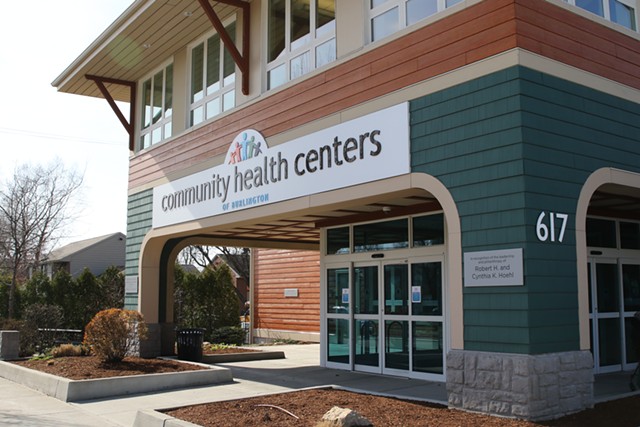The World Health Organization defines community health as environmental, social, and economic resources to sustain emotional and physical well being among people in ways that advance their aspirations and satisfy their needs in their unique environment.
The term “community health” refers to the health status of a defined group of people, or community, and the actions and conditions that protect and improve the health of the community. The workers in this field are the frontline representatives of the healthcare team. Often, they are members of the community themselves. They reach out, trying to immerse themselves with folks who may not see a doctor or specialist regularly and who might even have some hesitancy dealing with a system that can be confusing, time-consuming, and expensive. SEE: Community Health Specializations
Because they are engaged with everyone—children and the elderly, well-to-do and poor, able-bodied and disabled—community health workers have an in-depth knowledge of the living conditions, challenges, and concerns of that population. Community health focuses on an overall geographic area rather than on shared characteristics such as age or diagnosis. The defined area could be as small as a neighborhood, or it could encompass a city or an entire region.
How They Operate
Professionals help communities prevent disease and promote healthy living by examining health through the lens of neighborhood structures and even policy decisions. For example, they would promote the use of shared outdoor spaces to encourage physical activity and community-building.
The resources community health professionals create are shaped by the needs of the individual members of a community and informed by the community and its schools, places of worship, social workers, local government, and health care providers. Collaboration extends across the healthcare continuum and into the community.
Therefore, people in the field may be more involved in local government than other healthcare workers would be. They often become advocates for policy change and focus more closely on healthy equity and socioeconomic disparity.
Factors in Community Health
Socio-cultural factors, including the beliefs, norms, and traditions of a place, shape attitudes toward health and influence the habits that contribute to healthful practices or detract from them.
Access is a key point for health professionals—giving everyone, but especially those most on the margins—access to healthy food, safe and reliable child care, after-school programs, and transportation services.
Geographical and environmental health factors are also priorities, including disease prevalence, overcrowding, industrial development, and pollution levels.
Community health workers think through the “how” as much as the “what,” taking on the responsibility of the long-term wellness of vulnerable populations. That includes collaborating across multiple sectors, employing culturally sensitive methods, and using scientific and evidence-based approaches to address not just the needs, but also the interests of the defined group.
The benefit to individuals is obvious, if not always immediate. But the benefits extend to the framework of the community itself, and to schools, businesses, and gathering places. Money is saved, absenteeism is reduced, mental health improves, and the spread of disease declines.
How To Start A Community Health Center
A community health center is a consumer directed healthcare organization that provides access to high quality, affordable, and comprehensive primary and preventive medical, dental, and mental health care.
In setting up a community health center, decisions will need to be made about the type of organization (e.g., starting from scratch vs. partnering with an existing health center, working with a public entity on a co-applicant model, etc.) the health center will be. Establishing a new corporate entity, filing with the Internal Revenue Service and state officials, and establishing a board and staff can be major undertakings. Likewise, to convert an existing corporation to a health center will almost certainly require changes to the board and by-laws, and maybe even articles of incorporation. Review with legal counsel to help determine the best path. Three models will be discussed here, as they represent the most common models for starting new health centers: non-profit models, public entity models, and partnership models. Following are some considerations on those models:
Non-profit models
New Organizations – the health center could form a new non-profit organization. As noted, this approach requires forming a corporate entity and filing for tax-exempt status under the US Internal Revenue Code, both of which can be completed with the help of legal counsel. Donations given to the entity are tax deductible by the donor. These organizations have limitations on lobbying and must have an appropriate tax-exempt purpose (providing health care services to the underserved is one of them).
Existing Organizations – if there is an existing organization in the community that could serve as the corporate vehicle (or for conversions of a community provider, like a family planning clinic, community action program, or free clinic), it can save a lot of effort. The organization will need to meet Program Requirements for health centers (especially board of directors composition), which can mean replacing existing board members with user members and limiting the size of the board to between 9 and 25 members10. Revising the mission of the organization may be required. For instance, a free clinic may have in its mission never to accept payment for care, or only to use volunteer clinicians, both of which would need to change.
Public Agency Model
A governmental agency, like a local health department12, can also seek health center status and funding. These organizations may receive waivers from certain personnel and financial controls because they are parts of government entities. These operating units of government may be required by statute or ordinance to follow certain personnel and finance requirements, and there are procedures for the operating unit to be a health center and still follow those requirements. In addition, the governance requirements can be difficult to comply with, given that the governmental entity’s leadership may be elected or appointed. To accommodate this situation, a public entity that cannot meet the governance requirements may apply under a “co-applicant” model. There are many special considerations for public agency models that are specific to certain situations.
Satellite of Existing Health Center
Another approach is to identify an existing health center in a nearby community that would be willing to open a new clinical site in the target community. This option may also make it easier to obtain federal funds because an existing health center may compete more effectively.
Partnership Models
When developing an organizational model health centers can, and in fact, should develop partnerships with other community providers that include contracting and collaborating for services. This might be developing a partnership with a local community mental health center to provide behavioral health care or a local dentist for oral care. Affiliation is an agreement that establishes a relationship between a health center and one or more entities.
Physical Space Considerations
The physical plant of a health center is a major consideration. It speaks to the ability of the health center to attract and maintain a patient base and the operational reality of providing primary health care services. Too small a facility will translate into an inability to attract sufficient patient volume to make the health center sustainable; too large a facility may become inefficient and have excess costs that a new health center cannot maintain; the right location is critical to make sure patients can find, access and use the health center facility easily.
Access and Location The health center must be easy to reach and convenient for the patients the health center wishes to serve. Depending on the target population, it may make sense to locate near where people live, where they work, or where they access social networks, like churches, community centers, and the like. Usually, a major street, located among other businesses that serve the population, is a good idea.
Public transportation access and parking are major considerations. A beautiful facility that is several blocks away from public transit routes or that has no available parking is not a good idea. The planning process will reveal the right location for the population. FIND OUT MORE ABOUT: Community Health Extension Worker






